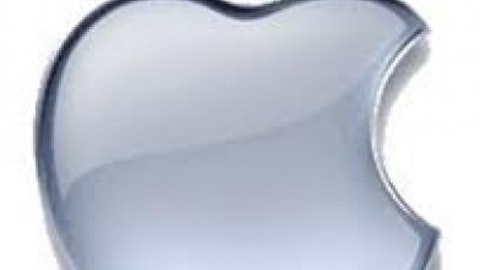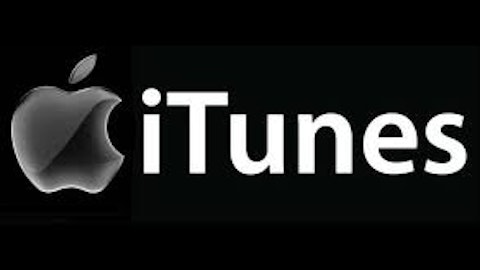For many years, Apple Inc. (NASDAQ:AAPL) has been known for innovation in its products like the iPhone, which allowed it to charge premium prices for its merchandise. But with the availability of cheaper smartphones in the market, the company is facing issues in maintaining its premium brand image. Investors are worried whether or not the company will be able to repeat the same success of Steve Jobs era. This concern has shown reflection in the company’s stock price, which has declined more than 15% year to date in contrast to S&P 500, which has experienced growth of around 13%.
In the second quarter, Apple Inc. (NASDAQ:AAPL)’s margin declined to 37.5% from 47% year-over-year. This decline is considered a sign of becoming the victim of “Smartphone Commoditization.” The company is experiencing higher sales of iPhone 4 in comparison to the higher-priced iPhone 5 as the market for high-end smartphones is saturated. It will also launch the iPhone 5S and a cheaper version of iPhone in the fourth quarter, causing some consumers to delay their purchase of the higher-end version.
Emerging market focus – opportunity or threat?
Going forward, emerging markets will be the key driver of global smartphone growth. According to Nomura, smartphone shipments will reach to 1.42 billion units in 2016, up from 0.95 billion units in 2013. It is estimated that around 75% of this growth will come from the Asia-Pacific region. Apple Inc. (NASDAQ:AAPL) has around 12% market share in this region, against 31% in developed countries. In order to tap this market, Apple is focusing on bringing in a low-end iPhone.
Apple will face issues in targeting the larger Asian market because of its smaller screen design. The high-end Asian smartphone market is dominated by phones with five-inch screens, which reduce packaging complexity and make the smartphones available for less than $250. As Apple Inc. (NASDAQ:AAPL) is not willing to launch a five-inch smartphone before 2014, it will have to face intense pricing competition.
What’s with the cheaper iPhone strategy?
Apple is most likely to launch a mid-range smartphone in September for $350. I don’t think this will be a successful strategy for the company. This iPhone is expected to have a profit margin of around 27% to 35%, against the average margin of more than 40% that the company enjoys with the current iPhones. This iPhone should follow the lead of iPad mini, with very slight changes in features and price. As a result, it will start grabbing market share from high-end iPhones and will cause one-third of the high-end iPhone customers to shift to the cheaper version.
On the other hand, its lower-range product pipeline provides an opportunity to finalize a deal with the largest Chinese network carrier, China Mobile Ltd. (NYSE:CHL) . China Mobile controls almost two-thirds of the Chinese wireless market, but has only 41% of 3G subscribers, as its proprietary 3G network requires a specific chipset. This has been a major bottleneck for China Mobile Ltd. (NYSE:CHL) to increase its 3G penetration. Currently, China Mobile is the only player which doesn’t have a contract with Apple Inc. (NASDAQ:AAPL) to sell iPhones. Even after adding 26 million 3G subscribers in the first quarter, compared to 8 million year-over-year, China Mobile’s average revenue per user declined from $11.57 to $9.78. This suggests that China Mobile Ltd. (NYSE:CHL) is not able to add quality subscribers in the absence of iPhone.
Overall, 3G penetration is only 25% in China, which provides an immense opportunity for this Chinese telecom player to expand. Even with this low penetration level, China has become the world’s biggest smartphone market by volume, surpassing the U.S. With the expansion of 3G services, China’s large 2G subscriber base will continue to shift from 2G services to 3G services which will provide higher revenue. This will also be beneficial for Apple, as with new and cheaper iPhones it will be able to capture major market share from an expected deal with China Mobile Ltd. (NYSE:CHL) in 2014. This low-end iPhone will increase its Chinese addressable market by 200%.
Peer Review
As one of Apple Inc. (NASDAQ:AAPL)’s major competitors, Samsung’s strength lies in the speed of its new product launches. It provides features that are similar or better to the iPhone for a lesser price. According to a recent Morgan Stanley forecast, the iPhone will have a demand of 31 million units in the current quarter against 45 million units of Galaxy phones.
It is becoming increasingly difficult for Apple to maintain its “premium pricing policy” given the traction that Samsung has with its Galaxy pricing. For reference, the Galaxy S 4 is priced at 20% less than the pricing of iPhone 5, while its features beat iPhone 5 in almost every aspect.
Talking about Apple Inc. (NASDAQ:AAPL)’s other competitor, Nokia Corporation (ADR) (NYSE:NOK), it continues to lose market share to Samsung and other Android phone makers. The only positive aspect for now is its increased focus on low-priced Windows smartphones. According to AdDuplex, Nokia currently has an 80% market share of the Windows Phone market. It is expected that in 2013, Windows Phone will start gaining acceptance and will reach to 45 million units. As Samsung and HTC have reduced their focus on Windows Phone software, it provides an opportunity for Nokia Corporation (ADR) (NYSE:NOK) to further tap the Windows Phone market.
Nokia Corporation (ADR) (NYSE:NOK) has recently launched a cheaper range of Lumia smartphones, which will help it to gain larger market share in countries like India and China. Its Lumia 520 model is already a success in China, as it was sold out for the second time in Nokia’s official Jingdong store. With its recent launch of Lumia 520 for China Mobile Ltd. (NYSE:CHL), Nokia Corporation (ADR) (NYSE:NOK) will see a further revenue upside.
Put it on hold
With the maturing high-end smartphone market, Apple is focusing more on a cheaper version of its iPhone to increase its addressable market. It also poses a threat of cannibalization of its own high-end iPhones. It is currently not clear that a cheaper iPhone will actually be a low-range or mid-range product.
On a positive note, its announcement of returning $100 billion to shareholders in the form of buybacks and dividends by 2015 is on track. Apple Inc. (NASDAQ:AAPL) recently issued a $17 billion bond, which is its largest corporate bond issuance. Apple will utilize this fund for its share buyback and paying dividends.
Overall, I recommend holding this stock for now and waiting for more information about its upcoming products.
Madhu Dube has no position in any stocks mentioned. The Motley Fool recommends Apple. The Motley Fool owns shares of Apple and China Mobile Ltd. (NYSE:CHL).
The article Can Emerging Markets Save This Sinking Ship? originally appeared on Fool.com.
Madhu is a member of The Motley Fool Blog Network — entries represent the personal opinion of the blogger and are not formally edited.
Copyright © 1995 – 2013 The Motley Fool, LLC. All rights reserved. The Motley Fool has a disclosure policy.





